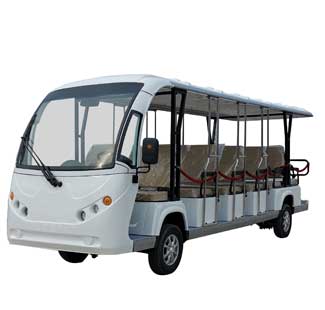Electric golf carts are generally powered by lead-acid batteries, which are charged and discharged to drive the golf cart. Electric golf cart batteries are required to have high capacity, high energy density, low self-discharge, and be safe and reliable to use.
To extend the life of electric golf cart batteries, it is crucial to maintain and upkeep them properly. This includes avoiding storing the batteries in a discharged state, preventing over-discharging, using a dedicated charger, avoiding high-current discharge, controlling charging time, and performing regular maintenance and inspections. Let's learn more about the requirements and maintenance of electric golf cart batteries together!
Requirements of electric golf cart batteries
Electric golf carts are powered by on-board power supplies and use lead-acid batteries, including 2V, 4V, 6V, 8V, and 12V batteries. The main requirements for electric golf cart batteries are:
High capacity and energy density are required.
Low self-discharge and good capacity storage performance.
Grids should be made of lead-calcium alloy to reduce water loss and achieve maintenance-free performance.
The grid design should use lead paste formula to improve battery charging acceptance capacity.
High-conductivity terminals are used to facilitate high-current discharge of the battery.
The battery should be equipped with a valve-controlled design for safe and reliable use.
The battery should use gel electrolyte to prevent electrolyte layering during use.
How to maintain and upkeep electric golf cart batteries?
To extend the life of electric golf carts, it is necessary to maintain and upkeep the batteries properly:
Avoid storing the electric golf cart in a discharged state. When the battery is discharged, it is prone to sulfation, with lead sulfate crystals adhering to the grid, blocking ion channels, causing inadequate charging, and reducing battery capacity. When the electric golf cart is idle, start it once a month and charge the battery to extend the battery life.
When the ammeter pointer displays insufficient power, charge the battery promptly and prevent over-discharging. In such cases on the golf course, you can seek help from other vehicles and use their batteries to start the vehicle.
Use a dedicated charger to charge the electric golf cart batteries, and place them in a cool and ventilated area to avoid high temperatures and humidity.
Avoid high-current discharge to prevent lead sulfate crystallization and damage to the physical properties of the battery grid.
Control the charging time of the electric golf cart battery, with an average charging time of around 8 hours. If the driving distance after charging is short, do not overcharge the battery, as it may cause water loss and heat generation, reducing the battery life.
The electric golf cart battery should be regularly checked and repaired, especially when the cruising range suddenly drops in a short period. You can send the battery to an authorized factory or professional battery repair organization for inspection, repair, or replacement.




